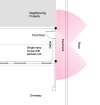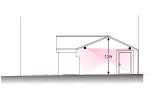Hi all!
So I'm awaiting delivery of an order from Andy. Two of the cameras are IPC-T54IR-ZE S3, which will be mounted to a brick gable wall, with the lens of the cameras orientated as per the enclosed images. Can they be mounted direct, flat to the wall, and if so can the body / lens be adjusted to orientate the lens as required? Or should I use a wall mount, like the PFB203W, or something similar? I will be drilling directly through the wall for the cable, which will enter the loft / attic space.
Thanks!


So I'm awaiting delivery of an order from Andy. Two of the cameras are IPC-T54IR-ZE S3, which will be mounted to a brick gable wall, with the lens of the cameras orientated as per the enclosed images. Can they be mounted direct, flat to the wall, and if so can the body / lens be adjusted to orientate the lens as required? Or should I use a wall mount, like the PFB203W, or something similar? I will be drilling directly through the wall for the cable, which will enter the loft / attic space.
Thanks!


